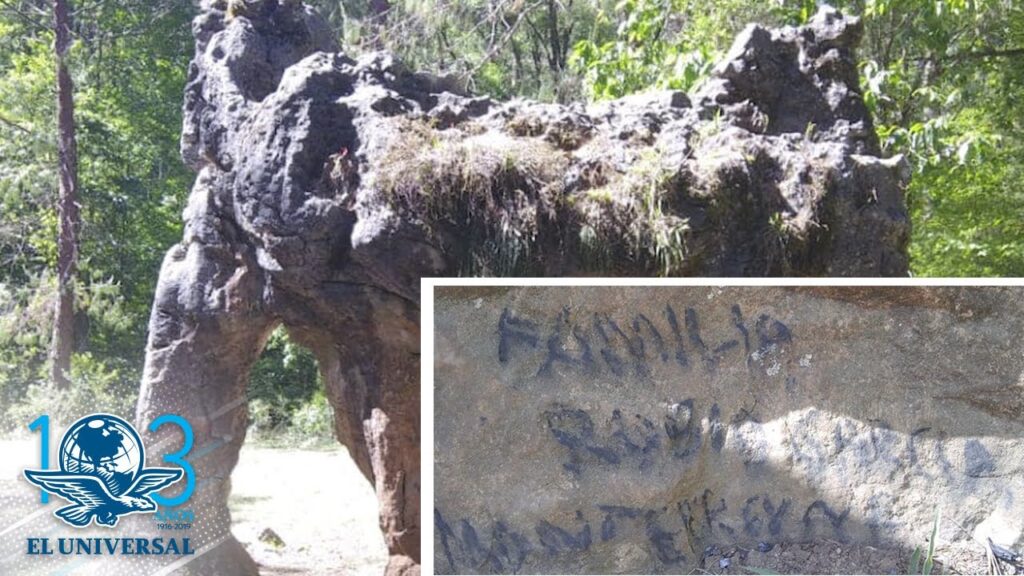The Mysterious Disappearance of Iztacalco’s Unidad Habitacional Lake
Enveloped in urban legend and local lore, the story of Unidad Habitacional Lake’s vanishing act in the borough of Iztacalco has intrigued both casual visitors and fervent historians alike. Once a modest body of water amidst bustling neighborhoods, its existence is now but a fleeting memory captured only in the anecdotes of the eldest residents. The lake’s disappearance begs the question: what forces are potent enough to erase such a feature from the heart of Mexico City’s concrete landscape?
The answer may lie in the intricate and often turbulent history of Mexico City’s relationship with water. Built on the ruins of Tenochtitlan, the Aztec city that was once cradled by a system of lakes, Mexico City has continually grappled with the dilemma of managing its aquatic arteries. In the case of Iztacalco’s Unidad Habitacional Lake, the prevalent theories range from natural phenomena to deliberate human intervention. Experts point towards the thirsty ground beneath the metropolis that indiscriminately drinks in lakes, rivers, and streams.
Yet, the plot thickens with accounts of unnaturally accelerated drainage correlating with the rapid urbanization of the 20th century. Infrastructure projects aimed at addressing flooding and burgeoning population demands might have inadvertently (or perhaps, deliberately) altered the lake’s fate. Stories of tunnels, pipes, and even clandestine operations surface as one delves deeper into the lake’s mysterious exit. The paucity of official records on such undertakings only adds to the enigma that shrouds the lake’s demise.
The ecological and social repercussions of the lake’s disappearance have been profound. The local climate, wildlife habitats, and daily lives of the lake’s neighboring communities were irrevocably transformed. Elders mourn the loss of a natural escape that once offered respite from the urban grind, while ecologists lament the vanishing of an ecosystem that had its unique role in the balance of Mexico City’s environment. The change is symbolic of a larger narrative wherein the natural world often yields to the juggernaut of urban development.
Whether erased by the hand of progress or swallowed by the earth themselves, the recollections of Iztacalco’s Unidad Habitacional Lake now linger in the realm of oral history and regional mystique. As the city moves relentlessly forward, the mystery inspires both cautionary reflection and an undercurrent of fascination – serving as a reminder that even as we forge ahead, we leave silent stories and unsolved mysteries in our wake.
Exploring the History Behind Iztacalco’s Vanished Lake
Once an essential part of the Aztec capital city’s intricate lake system, the waters of Iztacalco bear witness to a fascinating history that predates even the famed Tenochtitlán. In the pre-Hispanic era, this lake was a bustling hub of agriculture and transportation. The native people, ingenious in their environmental manipulation, constructed the famous chinampas – floating gardens that enriched their culture and fed their civilization.
The vanishing of Iztacalco’s lake is a tale of both natural phenomena and human impact. Over centuries, the waters receded due to climatic changes and seismic activities, which were common in the Valley of Mexico. However, it was the arrival of the Spaniards that marked the beginning of the end for this majestic water body. Their relentless push for urbanization and water control projects initiated the lake’s transformation from a life-giving force to merely a chapter in history books.
Diverting the waters for colonial endeavors, the Spanish reshaped the landscape dramatically. Canals that once connected the various parts of the lake system were transformed, repurposed, or filled in to make way for roads and expanding farmland. The infrastructure necessary for a growing city, along with the pressures from a burgeoning population, ultimately sealed the fate of Iztacalco’s lake. By the 20th century, the last remnants of the body of water were drained to prevent the flooding of Mexico City, leaving behind a fertile valley.
The drying up of the lake gave rise to a different Iztacalco, with the establishment of neighborhoods, industries, and urban life taking precedence over the natural environment. Yet, the soil in the area remains richly imbued with its watery past, allowing for certain areas to maintain a lushness that hints at the previous presence of a lake. Some old-timers in the community retain oral histories and tales of a time when water was the lifeblood of their locality, giving modern residents a fleeting taste of the lake’s bygone significance.
Modern-day Iztacalco is a vibrant district of Mexico City, a place where past and present merge in the crowded streets and local markets. Yet, history enthusiasts and eco-tourists alike visit this place to unearth the stories of what once was. Vestiges of the area’s aquatic origins can still be explored through the remains of ancient chinampas, hidden waterways, and the ubiquitous Aztec influence on contemporary Mexican culture. As development continues, efforts to preserve this rich history become ever more crucial in the collective memory of Mexico City’s inhabitants.
The Natural Wonder of Iztacalco That Was Swallowed by a Crack
In the heart of Mexico, a tale of natural beauty and geological phenomena wove its story in the borough of Iztacalco, once home to the enchanting Lake Texcoco. This natural wonder, a testament to nature’s artistic prowess, served as a lifeblood for the local ecosystem and a centerpiece for the community. But amidst its vibrant life, an unforeseen force churned beneath the surface.
It was not long before the ground betrayed the lake’s serenity. A massive crack, deep and relentless, emerged with an insatiable appetite, beginning to devour the land piece by piece. It was a catastrophic event that caught the attention of geologists and adventurers alike, as they watched in awe as the earth slowly swallowed this natural gem. The cause, a combination of natural subsidence and human activity, led to this dramatic disappearance.
The lake’s demise was not only a loss of a natural wonder but also a vital cultural and historical symbol for the Iztacalco community. Revered for its tranquil waters and its historical significance, the vanishing of the lake left a void in the heart of the locals. Tales of its ethereal beauty and the legends that danced upon its waters have now become a whisper from the past, ensnared by the relentless progression of the crack.
Today, the site of what was once Lake Texcoco is a stark reminder of our planet’s dynamic character and the transient nature of its landscapes. Visitors to Iztacalco can still explore the region, observing firsthand the area’s transformation and paying homage to the memory of the natural wonder that once graced this land. The story of the lake swallowed by a crack remains a poignant chapter in Mexico’s rich tapestry of natural history.
What Happened to the Splendid Lake at Unidad Habitacional Iztacalco?
Once a shimmering body of water, the lake in Unidad Habitacional Iztacalco now dwells in the stories of the elders of the community. This region, situated in Mexico City, was once a thriving part of the vast Lake Texcoco, a natural habitat for a variety of flora and fauna. Birds soared over the serene waters, while fishermen cast their nets in the hopes of a fruitful catch. The lake provided a picturesque natural oasis amidst the urban sprawl, a place for families to bond and children to marvel at nature’s bounty.
However, the transformation of Mexico City and its environs did not spare the beautiful lake at Unidad Habitacional Iztacalco. The relentless drive for urbanization, coupled with an ever-increasing population, put pressure on the lake’s existence. Infrastructure projects and land reclamation progressively encroached on the once-expansive waters, slowly siphoning away its lifeblood. The water levels began to recede, revealing more of the invaded land and less of the aquatic splendor that had defined the area for centuries.
As the years passed, the lake that once supported an ecosystem and provided recreational space for locals became a memory. Where clear waters rippled, concrete foundations now sprawl. It is a testament to the area’s rapid urbanization, which prioritized development over environmental preservation. Today, one can only catch glimpses of this lake’s past magnificence through old photographs and the nostalgic narratives of long-time residents, who recall the lake’s splendor and mourn its disappearance.
Uncovering the Fate of Iztacalco’s Lost Lake: An Adventure Tale
The Iztacalco district of Mexico City is shrouded in the historical intrigue of the ancient Lake Texcoco, a vast water body that once cradled the Aztec empire. In a journey that retraces the steps of ancient peoples, intrepid adventurers can delve into the turbid tales of the lake’s disappearance—a transformation from vibrant aquatic life to the bustling urban sprawl we witness today. This exploration is not just a physical venture but a plunge into the temporal depths of Mexico’s rich past.
In the heart of what was once a thriving watery landscape, the lost lake of Iztacalco serves as a whispering reminder of environmental changes through the centuries. Observant visitors can still find traces of this once-majestic body of water in the contours of the land and the local lore that persists in elderly recitations. The quest to understand its fate leads many down a path of historic revelation and ecological education, as the lake’s story is a complex interweaving of natural and human-induced phenomena.
Engaging with the local community unveils a tapestry of folklore and fact, where the legends of the lake intertwine with more sober chronicles of its decline. Through conversations with historians, residents, and ecological activists, one begins to piece together the timeline of the lake: from its pivotal role in the Aztec civilization to its gradual recession in the face of expanding settlements and infrastructure.
Among the remnants of Iztacalco’s aquatic heritage are the chinampas, or “floating gardens,” a marvel of agricultural ingenuity. These vestiges not only provide insight into the ingenious water management techniques of the Aztecs but also embody a resilience, now being rediscovered and appreciated. Modern-day adventurers and environmentalists are drawn to these ancient constructs, eager to glean wisdom from their sustainable design.
The depletion of the lake, while a testament to urban growth and transformation, also stands as a significant ecological turning point. The journey to chart the lake’s metamorphosis highlights a critical juncture at which environmental conservation and historical preservation intersect. Adventurers who set out to trace the fate of Iztacalco’s lost lake often find themselves enmeshed in a broader dialogue—a narrative that challenges us to reflect on the balance between civilization’s march forward and the natural world’s need for stewardship.



